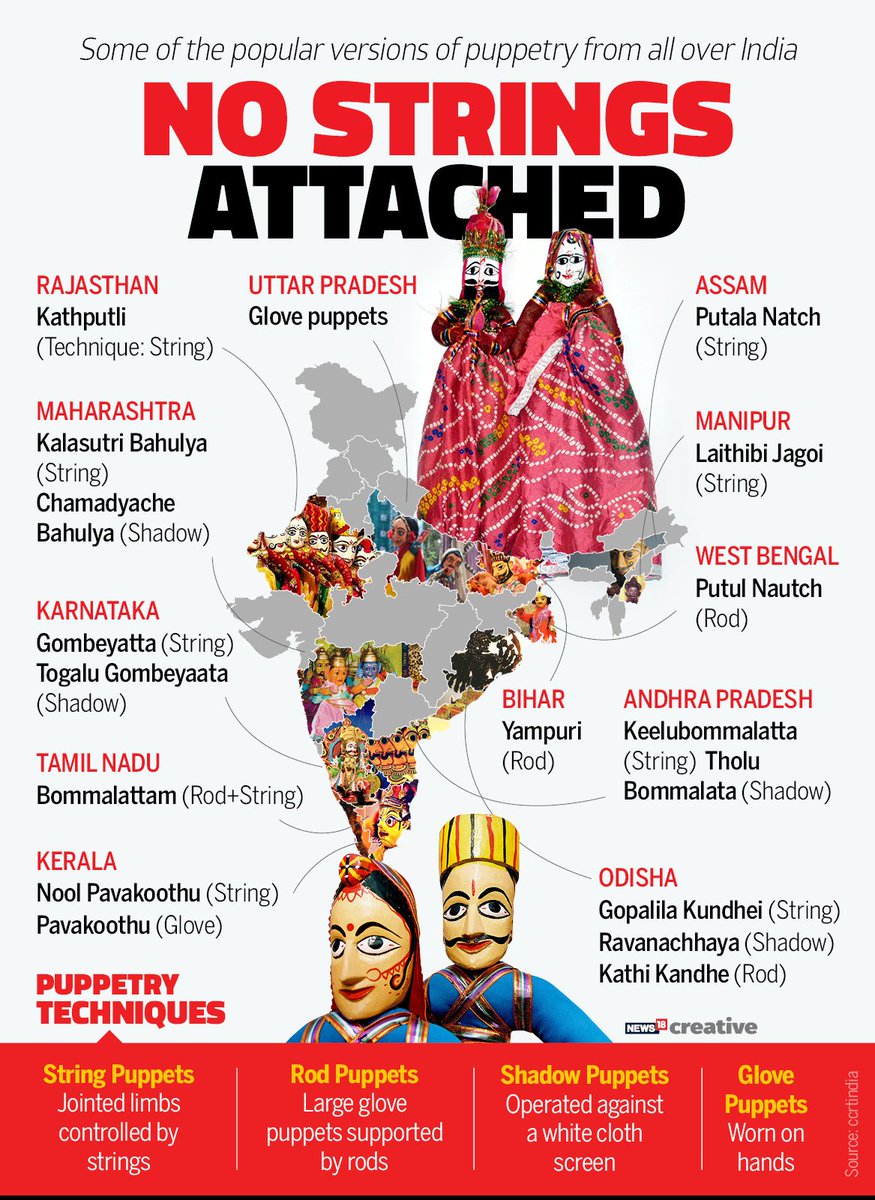PUPPETRY

- India boasts a rich heritage of puppetry, with different states showcasing their unique puppetry forms.
- For example, Rajasthan is renowned for its Kathputli, string puppets made from wood and cloth.
- The puppeteers skillfully manipulate the puppets, accompanied by folk music and storytelling, to depict tales from epics and folklore.
- Kathputli puppetry has gained recognition both within India and internationally, with performances being held at festivals and cultural events
- Similarly, the ancient art of shadow puppetry, known as Togalu Gombeyaata, thrives in Karnataka
- This form uses intricately designed leather puppets to cast shadows on a screen, creating enchanting visuals accompanied by traditional music and narration
- Togalu Gombeyaata performances continue to enthrall audiences, preserving the cultural heritage of the region

-
Marionette Puppetry: Marionettes are string puppets suspended and controlled by strings or wires attached to various parts of the puppet's body. Puppeteers operate marionettes from above, manipulating the strings to create lifelike movements.
-
Shadow Puppetry: Shadow puppetry uses flat, cut-out figures made from materials like leather, cardboard, or paper. These puppets are held between a source of light and a screen, casting shadows that are visible to the audience. The puppeteer manipulates the puppets behind the screen, creating silhouettes that depict characters and actions.
-
Rod Puppetry: Rod puppets have long rods attached to their bodies, which puppeteers manipulate to control their movements. The rods are often hidden beneath the puppets' clothing or scenery, allowing for precise control and expressive gestures.
-
Bunraku Puppetry: Originating in Japan, Bunraku involves large puppets operated by multiple puppeteers. The puppeteers are visible on stage, dressed in black, and work together to manipulate different parts of the puppet, including the head, hands, and feet.
|
For Prelims: Puppetry, types of puppetry, puppetry in all states
For Mains: 1. What is puppetry? Discuss types of poetry across India. explain the challenges faced by artists especially when technology has evolved so much.
|




